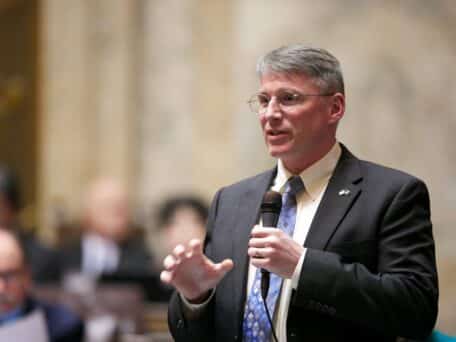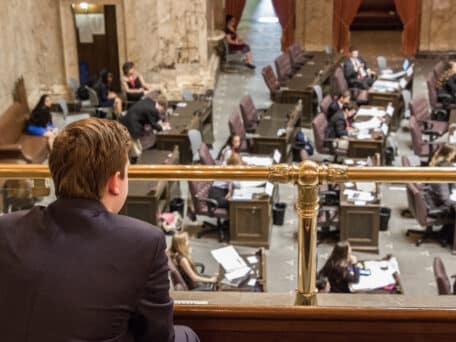Last week, Jay Inslee’s Office of Financial Management (OFM) determined that the pay raises he negotiated with state employee unions — which would cost taxpayers more than $583 million — are financially “feasible.” OFM’s determination, as SHIFT reported, is at odds with its previous warning that “revenue growth for 2015–17 will fall far short of what will be needed to maintain current services, cover mandatory increases and provide an additional $1 billion to $2 billion to meet the state’s constitutional basic education obligations.”
Well, as it turns out, even liberals understand what OFM does not—when you add up all the additional expenses facing our state in the next budget cycle, $580 million is not financially feasible. Publicola wrote last November,
In addition to McCleary, which puts the budget in a $700 million hole to start, here’s what else the budget has to deal with:
-
$1 billion in pensions and bond debt payments
-
$580 million in collective bargaining agreements
-
And an unknown cost for meeting a Washington State Supreme Court ruling that said it was unconstitutional to house psychiatric patients in emergency rooms. In other words, the state needs to increase funding for mental health services.
If a deficit occurs before state employee pay hikes are added in, how is it possible that a $583 million budget expense is financially feasible? Answer: it is not.
OFM’s determination of financial feasibility fails to account for the one expense that the state must factor in during the next budget cycle—K-12 education spending as ordered by the State Supreme Court. OFM’s failure to factor in the McClearly decision reveals gross irresponsibility, especially in light of the court’s contempt ruling in September.
The Washington Policy Center points out that Jay Inslee himself does not appear to agree with his budget office’s determination of financial feasibility. Yesterday, Seattle Times reporter Jim Brunner tweeted that Inslee’s budget director admitted that our green governor will likely ask for a billion dollar tax increase when he submits his 2015-17 budget proposal next week. Additionally, Brunner informed with Twitter followers that Inslee does not plan to fully fund I-1351.
.@GovInslee budget director says budget proposal next week to seek perhaps $1 billion in new revenue & won’t fully fund I-1351 #waleg
— Jim Brunner (@Jim_Brunner) December 9, 2014
Brunner followed-up his tweet with a reminder of Inslee’s campaign promise that he would not, as governor, raise taxes.
Flashback, Oct. 2012, @GovInslee: “I do not believe tax increases are the right path for the state of Washington” http://t.co/yvtC9yuMXH
— Jim Brunner (@Jim_Brunner) December 10, 2014
OFM’s financial feasibility reasoning is simply ridiculous. But, it would appear, that won’t keep Inslee from paying back his top campaign donors. Our green governor is determined to fulfill his political agenda, even if it means breaking multiple campaign promises and further burdening our state’s working families with more taxes.




